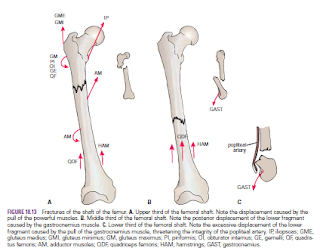Great
Saphenous Vein Cutdown
Exposure of the great saphenous vein through a skin incision
(a“cutdown”) is usually performed at the ankle. This site has the disadvantage
that phlebitis (inflammation of the vein wall) is a potential complication. The
great saphenous vein also can be entered at the groin in the femoral triangle,
where phlebitis is relatively rare; the larger diameter of the vein at this
site permits the use of large-diameter catheters and the rapid infusion of
large volumes of fluids
Anatomy of Ankle Vein Cutdown
The procedure is as follows:
1. The sensory nerve supply to the skin immediately in front
of the medial malleolus of the tibia is from branches of the saphenous nerve, a
branch of the femoral nerve.
The saphenous nerve branches are blocked with local anesthetic.
2. A transverse incision is made through the skin and
subcutaneous tissue across the long axis of the vein just anterior and superior
to the medial malleolus. Although the vein may not be visible through the skin,
it is constantly found at this site.
3. The vein is easily identified, and the saphenous nerve
should be recognized; the nerve usually lies just anterior to the vein
Anatomy of Groin Vein Cutdown
1. The area of thigh skin below and lateral to the scrotum
or labium majus is supplied by branches of the ilioinguinal nerve and the
intermediate cutaneous nerve of the thigh. The branches of these nerves are
blocked with local anesthetic.
2. A transverse incision is made through the skin and
subcutaneous tissue centered on a point about 1.5 in. (4 cm) below and lateral
to the pubic tubercle . If the femoral pulse can be felt (may be absent in
patients with severe shock), the incision is carried medially just medial to
the pulse.
3. The great saphenous vein lies in the subcutaneous fat and
passes posteriorly through the saphenous opening in the deep fascia to join the
femoral vein about 1.5 in. (4 cm), or two fingerbreadths below and lateral to
the pubic tubercle. It is important to understand that the great saphenous vein
passes through the saphenous opening to gain entrance to the femoral vein.
However, the size and shape of the opening are subject to variation.
The
Great Saphenous Vein in Coronary Bypass Surgery
In patients with occlusive coronary disease caused by
atherosclerosis, the diseased arterial segment can be bypassed by inserting a
graft consisting of a portion of the great saphenous vein. The venous segment
is reversed so that its valves do not obstruct the arterial flow. Following
removal of the great saphenous vein at the donor site, the superficial venous
blood ascends the lower limb by passing through perforating veins and entering the
deep veins.
The great saphenous vein can also be used to bypass obstructions
of the brachial or femoral arteries.






